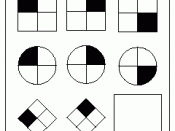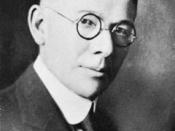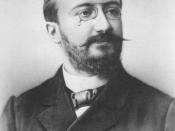Background Information
Binet defined intelligence as the capacity (1) to find and maintain a definite direction or purpose, (2) to make necessary adaptations-that is strategy adjustments -to achieve that purpose, and (3) for self-criticism so that necessary adjustments in strategy can be made.
Binet's two principles of test construction were age differentiation and general mental ability. Age differentiation refers to the fact that with increasing age, children develop their abilities. Thus, older children have greater abilities that do younger ones. Spearman developed his own theory of general metal ability, or g, based on the idea that a single general factor underlies all intelligence. Modern theorists have taken this concept further in gf-gc theory, in which there are two basic types of intelligences: fluid (gf) and crystallized (gc).
Mental age is a unit of measurement for expressing the results of intelligence tests. The concept was introduced in the second revision of the Binet scale in 1908.
A subject's mental age is based on his or her performance compared with the average performance of individuals in a specific chronological age group. For example, if a 6-year-old child can perform tasks that an average 8 year old can do, then the 6-year-old child is said to have a mental age of 8.
Like mental age, the intelligence quotient (IQ) is a unit of measure for expressing the results of intelligence tests. Introduced in the Terman 1916 Stanford-Binet revision of the Binet scale, the IQ is a ratio score. Specifically, the IQ is the ratio of the subject's mental age (as determined by his or her performance on the intelligence scale) and chronological age. This ratio is the multiplied by 100 to eliminate fractions.
The Deviation IQ, as used in the Stanford-Binet Scale, is a standard scare with a mean on 100 and...


